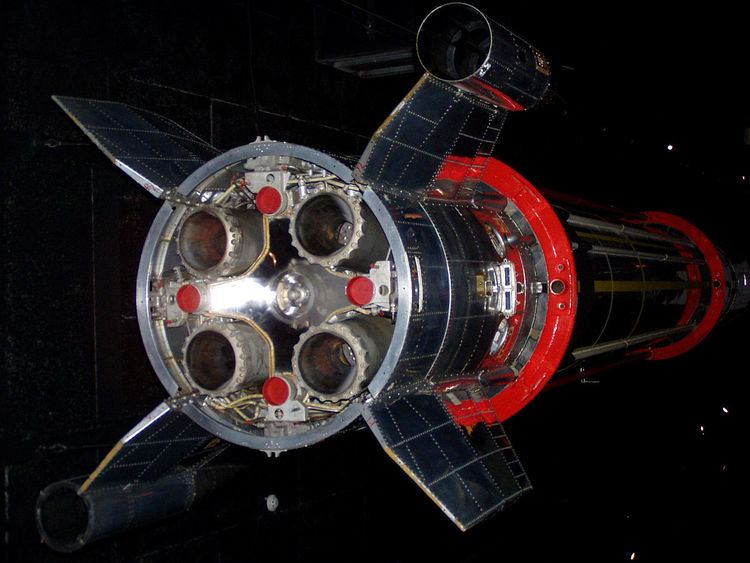Height 10.2 - 11.6 m Mass 12,500–14,200 lb | Country of origin United Kingdom Diameter 0.91 m | |
 | ||
Function Vehicle for re-entry studies | ||
Black Knight was a British launch vehicle to test and verify the design of a re-entry vehicle for the Blue Streak missile.
The United Kingdom's first indigenous rocketry project, Black Knight was manufactured by Saunders-Roe on the Isle of Wight, had its engines tested at High Down Rocket Test Site 1956 - 1959 under Paul Leyton,[1] and was launched at Woomera in Australia. Designed in 1955 by the Royal Aircraft Establishment and Saunders-Roe, 22 vehicles were fired between 1958 and 1965.
The Gamma rocket engines were designed and built by Armstrong-Siddeley at Ansty, near Coventry. One of the men who designed the engine was C. Donald.
The first two vehicles were 'proving rounds' - that is, launches without a payload in order to prove the design of the rocket. The third firing carried a re-entry vehicle. This flight showed that the chosen design for the re-entry body was a success.
Further firings with different heads showed up some unusual phenomena, and further tests under the code names Gaslight and Dazzle were carried out in conjunction with the United States.
A variety of heads were flown in these tests, including a plain copper sphere and a silica sphere. Heads composed of a composite asbestos-based material known as Durestos were also flown, and later tests finalised on a cone-shaped head re-entering pointed-end first, as used on many subsequent missile RVs.
All the re-entry firings took place on clear moonless nights, so that the luminous wake of the re-entry body could be observed photographically.
An improved Black Knight, with the tank diameter increased from 36 inches to 54 inches, and a more powerful second stage, named Kestrel, was proposed for a further set of experiments codenamed 'Crusade'.
However, the Royal Aircraft Establishment made various studies into extending the vehicle into a satellite launcher. The Treasury refused to fund both projects, and the enlarged Black Knight was cancelled in favour of the Black Arrow satellite launcher.
25 Black Knight vehicles were built in total at a unit cost of just over £40,000 each. One (BK02) was used for ground testing. One (BK11) was fired as part of the ELDO project, to check out range facilities. 21 were fired as part of the re-entry experiments and the remaining two (BK02 and BK22) are in museums in Edinburgh and Liverpool.
The Black Knight BK02 rocket is on display at the Royal Museum Connect Gallery in Edinburgh, Scotland. It is nearly 11 m high and stretches up for three floors. The Black Knight BK22 rocket is on display at the World Museum in Liverpool, England. It is suspended from the ceiling near the Planetarium, and there are other Black Knight components on display.
